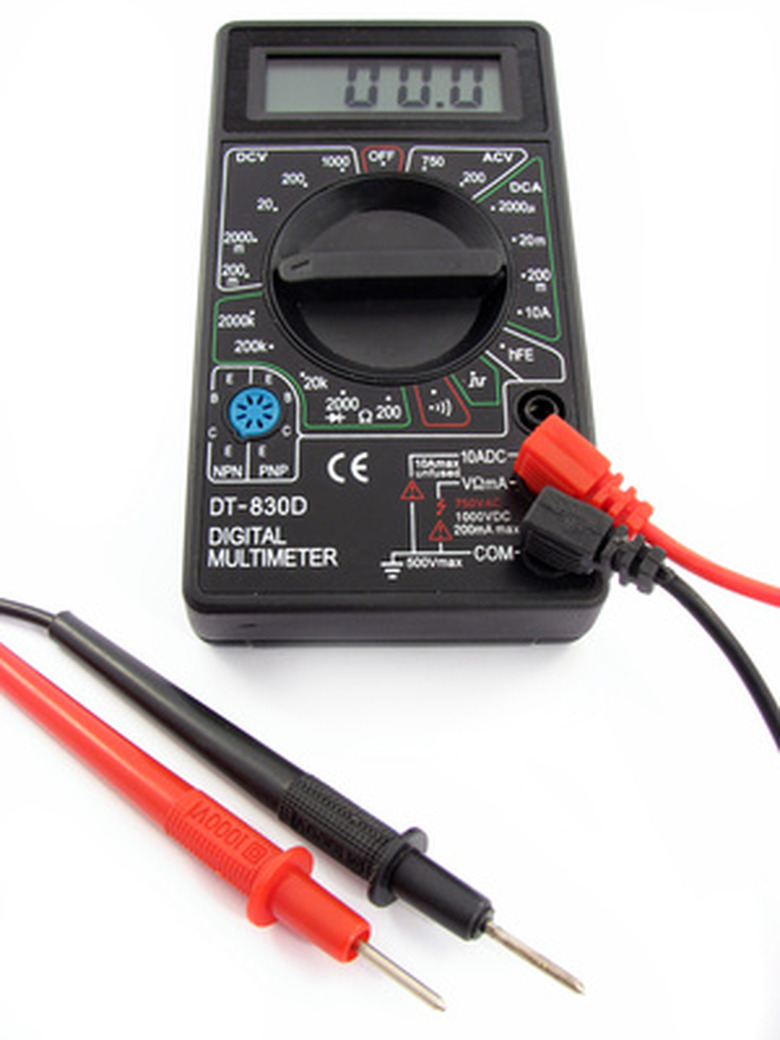How To Measure Conductivity
Measuring conductivity in a solution is an important parameter used to determine the quality of that solution. Conductivity can be affected by temperature, pollution and organic materials; therefore it is important to keep the solution away from as much contamination as possible while allowing it to achieve room temperature. In order to measure conductivity, a conductivity meter and probe are used. The meter and probe provide an electrical voltage to the solution that is being measured. A drop in voltage indicates electrical resistance, which is converted for a conductivity measurement.
Step 1
Remove the cover from the probe. Most probes may have clear or plastic cover that protects the electrodes.
Step 2
Turn the meter on by pressing the "on" button.
Step 3
Place probe in the solution that you are measuring. Some probes will have a line that shows how far to immerse the probe into the solution.
Step 4
Compensate temperature. Most meters will come with an automatic temperature compensation feature, but if not, you may need to input the temperature.
Step 5
Stir the solution with the probe. Adequate movement is needed for the meter to select the range appropriate for the value being measured.
Step 6
Take desired measurement. Some meters may blink and become stable after they get a value.
Step 7
Turn the meter off. Turning the meter off after the solution is measured can save the meter's battery life.
Step 8
Rinse the probe with distilled water and replace the cap. Cleaning the probe can prevent contamination, and the cap keeps the probe from being damaged.
Calibration
Step 1
Remove the cover from the probe. Most probes may have a clear or plastic cover that protects the electrodes.
Step 2
Place the probe in a Traceable Conductivity Standard solution. Traceable Conductivity Standards are available through a laboratory supply company.
Step 3
Compensate temperature. For automatic temperature compensation, the temperature sensor must reach equilibrium, which could take several minutes.
Step 4
Stir the solution with the probe for adequate movement.
Step 5
Press the "Calibrate" button. Some meters will display the word "Calibrate" when the meter is placed into calibration mode.
Step 6
Adjust the calibration. Some meters will have an arrow button or a dial switch to adjust the calibration to the known Traceable Conductivity Standard concentration.
Step 7
Confirm calibration. Calibration can be confirmed by measuring the Traceable Conductivity Standard in the regular testing mode.
Things Needed
- Conductivity meter
- Traceable conductivity standards
TL;DR (Too Long; Didn't Read)
The majority of manufacturers now have an instruction manual available on the Internet for many different types of conductivity meters. Search by model and maker.
Best practices state to calibrate using the same temperature as the solution you are testing.
Warning
Do not drink the Traceable Conductivity Standards. Wear gloves when handling Traceable Conductivity Standards to prevent contamination.
Cite This Article
MLA
Stanley, Nina. "How To Measure Conductivity" sciencing.com, https://www.sciencing.com/measure-conductivity-7482289/. 24 April 2017.
APA
Stanley, Nina. (2017, April 24). How To Measure Conductivity. sciencing.com. Retrieved from https://www.sciencing.com/measure-conductivity-7482289/
Chicago
Stanley, Nina. How To Measure Conductivity last modified March 24, 2022. https://www.sciencing.com/measure-conductivity-7482289/
